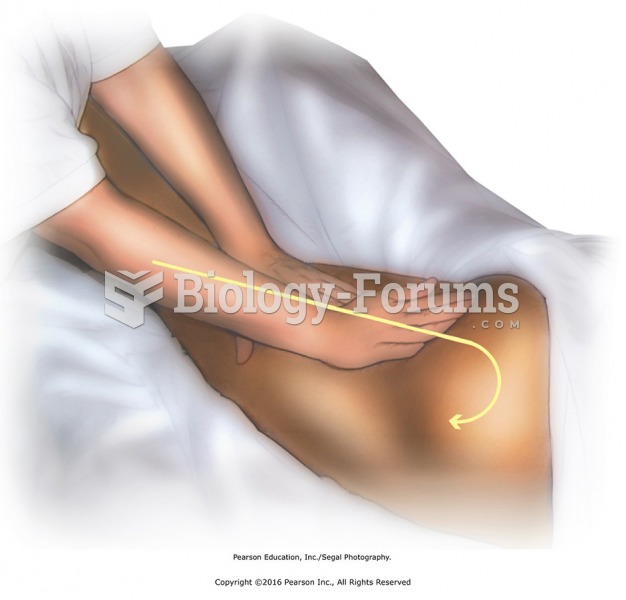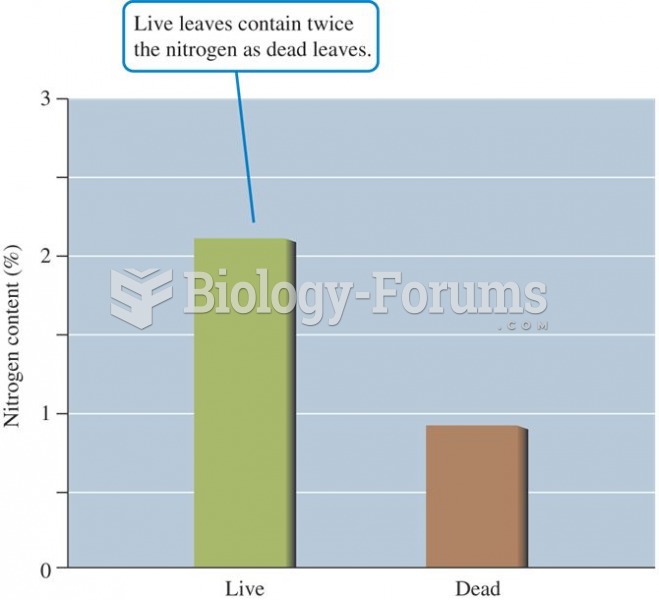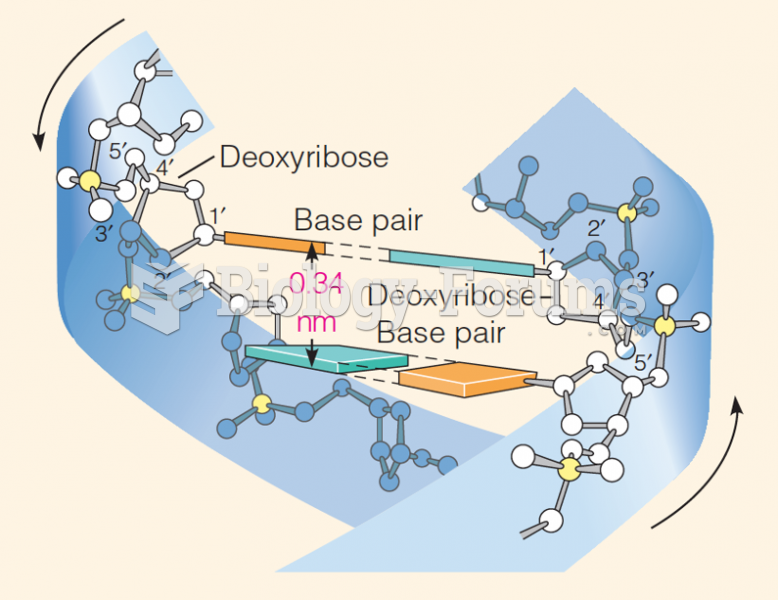This topic contains a solution. Click here to go to the answer
|
|
|
Did you know?
The human body's pharmacokinetics are quite varied. Our hair holds onto drugs longer than our urine, blood, or saliva. For example, alcohol can be detected in the hair for up to 90 days after it was consumed. The same is true for marijuana, cocaine, ecstasy, heroin, methamphetamine, and nicotine.
Did you know?
There are more bacteria in your mouth than there are people in the world.
Did you know?
Cytomegalovirus affects nearly the same amount of newborns every year as Down syndrome.
Did you know?
Lower drug doses for elderly patients should be used first, with titrations of the dose as tolerated to prevent unwanted drug-related pharmacodynamic effects.
Did you know?
Green tea is able to stop the scent of garlic or onion from causing bad breath.
 Apply oil or lotion to the entire leg and hip. Slide palms from lower leg to buttocks. Inside hand ...
Apply oil or lotion to the entire leg and hip. Slide palms from lower leg to buttocks. Inside hand ...
 Sliding effleurage with a thumb between metatarsals on the dorsal foot surface. Slide from web to ...
Sliding effleurage with a thumb between metatarsals on the dorsal foot surface. Slide from web to ...





